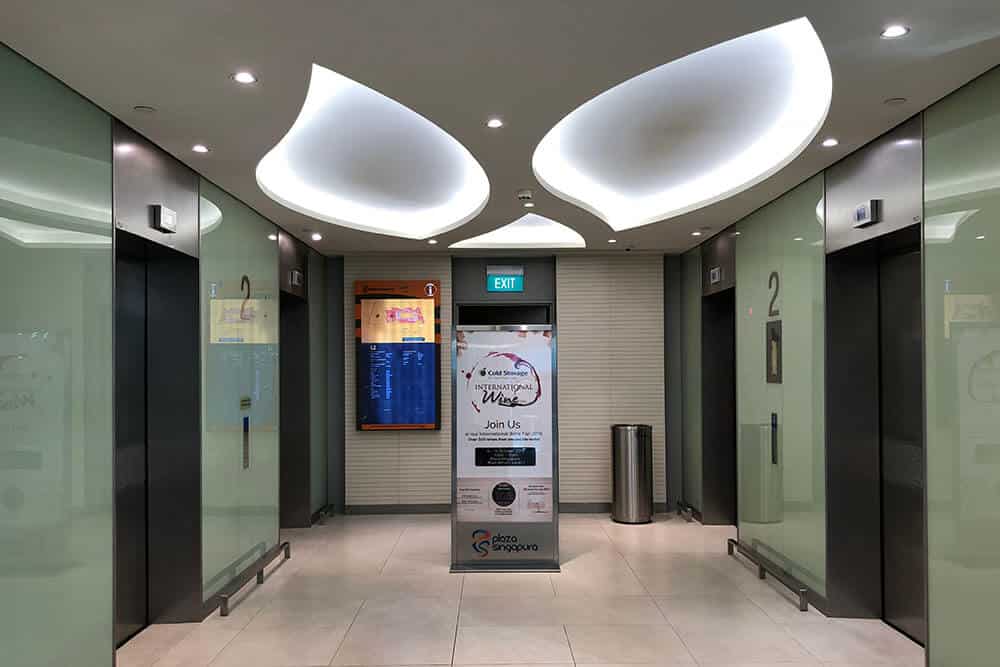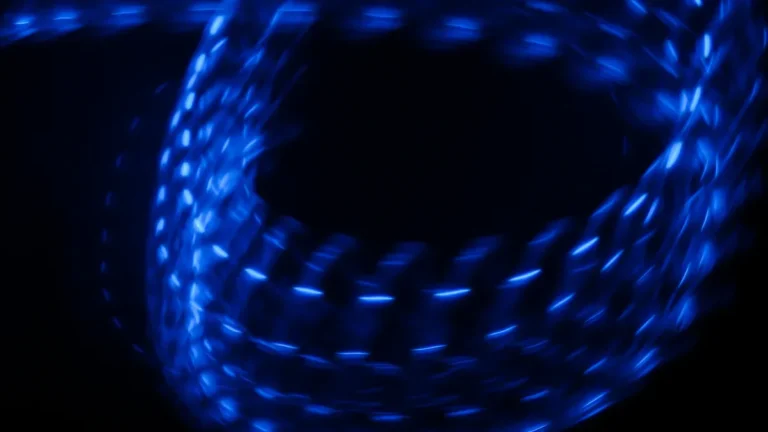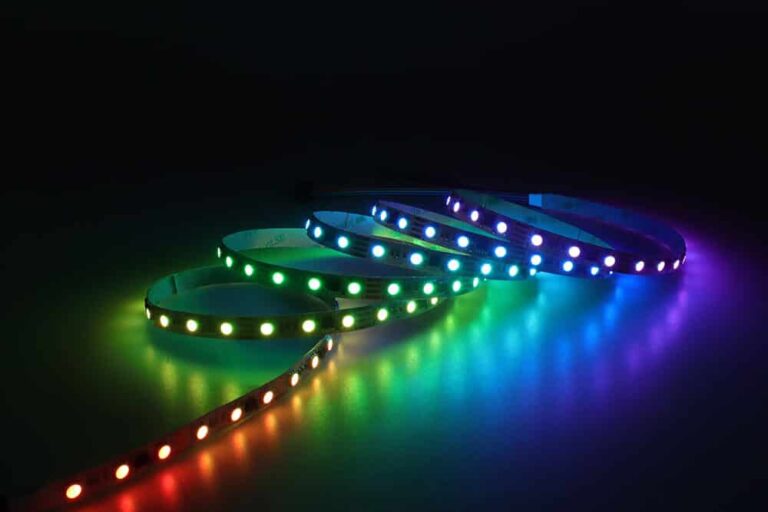What Is Cove Lighting & How To Choose, Install Like A Pro?
Table of Contents
Do you want indirect lighting for your home, office, or other places? Then, you can choose cove lighting. They are known for their adaptability and add a unique dimension to spaces. Basically, cove lighting delivers glare-free, ambient illumination.
In this article, I will provide a comprehensive overview of cove lighting, covering its definition, installation process, and more. Read thoroughly to learn more–

What Is Cove Lighting?
Cove lighting is a method which provides indirect illumination to brighten up your space. Typically, they used LED strip lights and concealed within a cove in the ceiling or wall. And when you turn on the lights they create a seamless line of lights that reflects into the room.
Besides, these lights are used in cinematography other than for home or commercial purposes. For instance, Roger Deakins has used this technique in many of his iconic films, such as” Blade Runner 204″,” Prisoner,” and “The Shawshank Redemption,” bringing this style to the fore.
Furthermore, they are popular in modern homes because of their ability to enhance ambiance without needing conventional ceilings or hanging lights. Typically, traditional lighting fixtures are visible, often compromising the desired aesthetics. Cove lighting addresses this by discreetly placing the light source within architectural recesses, such as valances or ledges.
Types Of Cove Lighting
LED cove lighting comes primarily in two strips and Linear LED cove lights. Both have distinct designs catering to different needs.
01. LED Strip Cove Lighting
This popular option uses LED strips, allowing easy wall mounting to enhance spaces like cabinets and corridors. Many of these strips come with an integrated dimmer, letting you tailor the brightness to the space’s needs.
02. Linear Cove Lighting
Perfect for spaces where consistent lighting without directional glare is preferred. This style illuminates room corners, cabinets, and even baseboards uniformly. Achieving this effect is due to the arrangement of multiple LED strips in a line. While offering more adaptability, Linear Cove Lighting tends to be brighter and might come with a slightly higher price tag for octangular LED strips.
LED Strips: The Preferred Choice for Cove Lighting
LED strips have emerged as the top choice for cove lighting due to their discrete design, suitable for ceilings or wall recesses. Their even light distribution brightens spaces uniformly. The wide array of LED options in color temperature, CRI, and design makes them incredibly versatile for cove lighting applications. Their compact designs are especially beneficial for tight spaces.
One of the challenges with cove lighting is the energy concern, given the number of lights involved. However, LEDs counter this problem with their exceptional energy efficiency, leading to substantial savings compared to conventional bulbs. Additionally, with the advent of smart technologies, customization has become a breeze. Adjusting brightness, color, or even color temperature is just a tap away on your device.
While LEDs might require a slightly higher initial investment, their versatility and efficiency make them the prime choice for cove lighting.

Advantages of Opting for LED Cove Lighting
Several advantages LED cove lighting offers, for instance–
- Energy Efficiency: LED cove lights are known for their energy-saving capabilities. They consume significantly less power than traditional lighting sources such as incandescent or halogen bulbs. This translates to lower electricity bills over time.
- Longevity: Cove lights have a longer lifespan than most traditional light sources. They can last anywhere from 25,000 to 50,000 hours or more, which means less frequent replacements and reduced maintenance costs.
- Consistent Color Rendering: These lights produce vibrant and uniform colors. They offer various color temperatures, and allow versatile design options to match or set any mood.
- Dimmability: Most LED cove lighting options have dimming capabilities, allowing users to adjust the brightness level as needed. This adds to the ambiance and can help save energy when full brightness is not required.
- Low Heat Emission: LEDs produce less heat than other light sources. This means they can be installed in tighter spaces without the risk of overheating or damaging adjacent materials.
- Safety: Lower heat emission reduces the risk of fires and makes LED cove lights touch-friendly. Moreover, LEDs do not contain hazardous materials, such as mercury, which is present in some fluorescent lights.
- Flexibility in Design: LED cove lights come in various shapes and sizes, including flexible strips, which can be customized to fit any design or architectural feature.
- Uniform Lighting: LED cove lights offer a smooth and even light spread without the hotspots that some traditional lights may produce. This ensures a consistent glow along the cove.
- Environmentally Friendly: LEDs are 100% recyclable, which reduces their carbon footprint. Furthermore, their long lifespan means reduced waste in landfills.
- Cost Savings Over Time: The initial cost of LED cove lights can be higher than other lighting options. Their energy efficiency, reduced maintenance, and longer lifespan often result in significant savings over the long run.
- Instant Light: Unlike other lighting technologies, LEDs light up instantly at their full brightness without needing a warm-up time.
- Less UV Emissions: LED lights produce little to no ultraviolet (UV) light. This reduces the risk of fading for fabrics, artworks, and other materials that can be sensitive to UV exposure.

Where To Use Cove Lighting?
As previously mentioned, Cove Lighting offers a blend of adaptability and versatility, making it suitable for a wide range of spaces, such as–

Restaurants
Implementing Cove Lighting in restaurants enhances the atmosphere, especially in the dining area. Fine dining establishments, in particular, can elevate their environment with these lights. A breathtaking interior paired with such outstanding lighting can significantly attract more patrons.

Retail Stores
The consistent illumination from Cove Lighting is perfect for retail settings. By adopting linear cove lighting, retail stores can achieve a uniformly lit space that accentuates items on the shelves. The soft glow on the merchandise enhances its appeal, potentially boosting sales.

Offices
Cove Lighting provides ample illumination without the harshness of glare. Incorporating it into office spaces results in a well-lit work environment. As a result, employees won’t be troubled by screen glare, reducing eye strain and enhancing productivity.

Hotels
The interior design plays a pivotal role in defining a hotel‘s appeal. Cove Lighting is an exceptional tool for emphasizing these designs, suitable for corridors, hallways, and decorative elements in the lobby. Additionally, such lighting enhances the photogenic quality of hotel spaces, a factor hoteliers recognize for its importance in today’s social media age.

Homes
Cove lights are not just for commercial settings; they beautifully complement residential spaces. They can accentuate home interiors, brighten living areas, and cultivate a warm bedroom ambiance. Given Cove LEDs’ flexibility, homeowners can get as inventive as they’d like with their lighting arrangements.
Installing LED Cove Lighting: A Step-by-Step Guide
The installation of the cove lighting is not that hard. You can do this by following the steps given below–
Step 1: Prepare The Installation Area
Before installing cove lighting, first you have to prepare the installation area. For this, clean the surface by removing dust and debris. Also, you can wipe the surface if necessary by using a damp cloth and then drying. Then, look around the whole place to see if you find any obstacles that could interfere with your installation.
Step 2: Cut The LED Strip Lights
Now take scissors to cut the strips to a specific length. However, most LED strips come with a designed cut sign; you have to cut at this point to prevent damage.
Step 3: Test The Lights
In this step, you can test the strips by connecting to the power supply temporarily before the final attachment. This way, you can ensure the strips work perfectly. If you find any issue, check connections and ensure there are no cuts.
Step 4: Attach The Strips
Take the strip lights and peel off the backing from the adhesive side. After that, gently place them in your desired location. However, if you are using mounting clips, attach them at regular intervals along the strip’s side. If you want to increase the security areas, like temperature fluctuations or high humidity, you can consider adding extra screws or adhesive.
Step 5: Connect Power Supply
This step requires connecting your LED strips to the power supply. And you have to ensure that all connections are secure to avoid circuit issues.
Step 6: Install Controllers (If Applicable)
When you use dimmable option and RGB strips, you have to install controllers. For this, you need to connect extra wiring or mounting control units.
Step 7: Finalize Connections
Finally, if everything is connected, you can test them again to check the wires and clips. Therefore, if you find any exposed or loose wires, fix them immediately; otherwise, this can lead to a hazardous accident.
Key Considerations For Choosing Cove Lighting
Having understood the advantages of Cove Lighting, it’s crucial to be aware of the various aspects to keep in mind when choosing Cove LED lights–
Color Temperature
Color temperature of the cove lights affects the room’s mood. For instance, warm white (2700K–3000K) creates a cozy atmosphere ideal for bedrooms and living rooms. On the other hand, cool white (4000K–5000K) suits kitchens and offices for better focus. Consistency in color temperature across fixtures ensures a balanced look and avoids mismatched lighting tones.
Shade Flexibility
Some Cove LEDs feature adjustable shade options. This allows for modifying the light’s beam angle using clamps and magnets. This feature enhances adaptability and removes the need for additional fixtures. They can easily fit into existing institutions and be adjusted as needed.
Sizes
Cove LEDs are designed in various shapes and sizes. It’s vital to match the size of the light with the room’s dimensions. Many LED producers offer complimentary consultations to help determine the right fit for a space. Consulting with them before making a purchase is advisable.
Dimming Capabilities
Adjusting the LED’s brightness with dimmers can be beneficial, especially for decorative purposes. This feature enables varying the light’s intensity to set different moods. However, be mindful of the type of control integrated with the LEDs, especially if installed in hard-to-reach places like high ceilings.
Color Rendering Index (CRI)
CRI measures how closely an artificial light source can mimic the color-rendering capabilities of natural sunlight on a scale of 1-100. LEDs with a higher CRI can replicate natural colors more accurately. For spaces like closets, it’s ideal to use LEDs with a CRI of 80 or more to ensure clothing colors are displayed authentically. Conversely, in areas like bedrooms where a softer ambiance is desired, LEDs with a lower CRI may be more appropriate.
Lighting Direction
Cove lighting can face upward, downward, or inward. For example, upward lighting reflects off the ceiling for ambient glow. While downward lighting highlights walls or vertical features. And the inward lighting adds drama in recessed niches. Therefore, you have to pick direction based on desired lighting effect, ceiling height, and the architectural elements you want to emphasize.
Budget
Cove lighting costs vary by design complexity, light type, and control systems. LED options are initially more expensive but offer long-term savings. This includes costs for fixtures, power supplies, installation, and any automation or dimming controls. However, you have to prioritize areas that benefit most from the lighting to stay within budget.
Troubleshooting Common Cove Lighting Issues
Like others lighting, cove lighting also face some issues–
Uneven Lighting Distribution
When you’re using some cove lighting strips brighter than other strips, then this can create uneven illumination.
Solution: For this, you need to check that all the strips are securely connected and there are no obstructions. Also, you can adjust angles to achieve more uniform distribution over the larger spaces.
Flickering Lights
This issue can come from poor connections or an inappropriate power supply.
Solution: To fix this issue, ensure all connections are tight. At the same time, consider upgrading your power supply, such as selecting one with a higher wattage capacity than initially estimated.
Color Inconsistencies (RGB Strips)
When your RGB strips offer inconsistent colors over different sections after installation, you need to check the batch.
Solution: Check that all your strips come from the same batch and the connection to the controllers is proper.
Final Thoughts
So, as you can see, cove lights are best for smooth and soft illumination. Also, they are versatile, energy efficient, run for years, and more. However, while choosing one, you have to consider things like brightness, color, etc. Not to mention, if you follow my guide for the installation, you can perform the installation steps easily.
Mylikeled offers top-tier LED strips and LED neon flex for interior and exterior settings. For seamless linear lighting solutions, reach out to us now!
FAQs
What are the benefits of cove lighting?
Cove lighting offers several benefits, including enhancing the ambiance of a room, creating a sense of spaciousness, and providing subtle, glare-free lighting. It’s also energy-efficient and can serve as a design element in modern and traditional interiors.
What types of lights are used for cove lighting?
LED strips, rope lights, and fluorescent tubes are commonly used for cove lighting. LEDs are the most popular choice due to their energy efficiency, long lifespan, and ability to produce a range of color temperatures and brightness levels.
Is cove lighting suitable for every room?
Yes, cove lighting can be used in nearly any room, from living rooms and bedrooms to kitchens and bathrooms. It’s especially popular in spaces where you want to create a soft, inviting atmosphere or highlight architectural features. However, it’s best to avoid using it in spaces with low ceilings, as it can make the room feel even more cramped.
How do I choose the right brightness for cove lighting?
The brightness of cove lighting should be subtle and ambient, rather than overpowering. A good rule of thumb is to choose LED strips with a lumen output that complements the room’s size and function. For accent lighting, lower lumens are sufficient, while task-oriented spaces may require brighter options.
Can cove lighting be used with smart lighting systems?
Yes, cove lighting can be integrated with smart lighting systems. Many LED strips are compatible with smart hubs like Alexa, Google Home, or other home automation platforms. This allows you to control the brightness, color, and even set schedules to enhance your home’s lighting.
What common mistakes should I avoid during installation?
You can avoid gaps between light sources that create shadow lines. Plus, you can place fixtures too close to wall edges or positions that cause visible hot spots. Also, maintain a consistent distance from the ceiling for uniform light distribution, typically 18in (46cm) or more from the ceiling.
Can cove lighting be controlled or automated?
Yes, many LED cove lighting systems are compatible with dimmers, smart controllers, apps, or remotes. Also, integrating dimming and color controls allows you to adjust ambiance and energy use conveniently. This makes it easy to set various moods or adapt to different needs.

Hi, I’m Xylia Xiong, a sales professional with 14 years of experience in the LED strip light industry. I specialize in providing tailored solutions, leveraging my expertise in LED products and the latest industry trends. Known for effective communication and problem-solving, I’m dedicated to helping lighting manufacturers, importers, and distributors achieve their goals.
Let’s work together to create customized solutions that exceed expectations.
Related Posts

The Best LED Strip Lights You Can Buy Right Now

Comparing WS2811 Vs WS2812B: Key Differences


